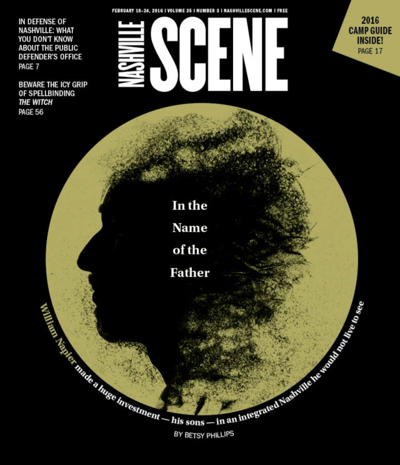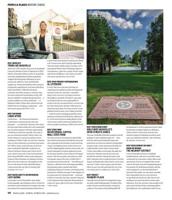
If you’ve ever driven north on 16th Avenue from Charlotte, you’ve probably noticed that the land is weird. You aren’t so much driving uphill as driving up an enormous, but shallow, set of stairs. When I was doing research on the old, old prison, I found a passing mention of the rock for the enormous stone walls surrounding the prison being quarried nearby. Recently, while researching the state capitol — here’s a spooky story from Andy Sher about the capitol and its history, if you want to get your ghost on — I found some information in Louise Littleton Davis’s book, Nashville Tales, about the quarry near the old, old state prison.
She writes:
Immediately after his arrival in Nashville, fast-working Strickland surveyed the situation — the steep hill formerly called Cedar Knob were workmen had already cleared the thick growth of cedar trees, and the quarry hardly one mile to the west, where stone for the building would be excavated. (That quarry, according to maps furnished recently by Robert Webster of the Metro Planning Commission, covered an area that is now the site of the Henry Hale Housing Project, plus a small area somewhat east of it. The quarry lay between Twelfth and Fourteenth avenues and was bordered by Jo Johnston and Charlotte.)
Without having seen the map she’s referring to, it’s hard to say, but I suspect there may be a mistake here. If the quarry was between12th and 14th, it’s under the interstate. But if it’s between 12th and 18th, then it’s under the housing project and the lay of the land under the current development there makes a lot more sense.
I wondered what could be dug up (pun intended) about the quarry and what made it so attractive — other than proximity — to Strickland. In other words, what kind of rock is there? Turns out, that is also very interesting and has ties to another family we’ve spent a lot of time talking about — The Napiers.
So, in 1892, Vanderbilt student Paul M. Jones published his thesis, The Geology of Nashville. Now, I’m assuming a lot of geological facts in this thesis are out of date. That’s fine. We’re not looking to Jones for what we know to be true now. We want Jones to tell us what folks believed to be true in 1892. And in 1892, there was a kind of limestone known as “Ward Limestone.” Here’s some of what Jones wrote about it:
In this paper it will be called Ward, the name being derived from the fine exposure of the bed in Mrs. Ward’s quarry near the Hudson place on Addison avenue and Pearl street. [...] The abundant occurrence of the Ward, its read accessibility and the ease with which it may be quarried have been taken advantage of in employing it for the various building purposes. Although stone from this bed is not suitable for the nicer work, it is perhaps more generally used for the commoner grades of masonry, such as foundations and curbing, than any other single bed of the Nashville series. The stone for the basements of the buildings of Vanderbilt University were obtained from this bed.
Well, that is cool, except I’m sure Strickland, had he been alive, would have cringed a little at hearing that his beautiful capitol has been lumped in with commoner grades of masonry. So, this is our quarry. Pearl Street runs right through it. But if you’re a fan of Nashville history, you’ve probably already picked up on the names “Mrs. Ward’s quarry near the Hudson place.” Who might this be? Well, obviously, Mr. Ward is dead or it’d be his quarry. So, our clues are a female Ward with ties to the Hudsons with a dead husband and, perhaps, a family tradition of digging in the ground in Middle Tennessee.
If this is sounding familiar, it’s because we talked about this very family when we talked about Solomon Napier. Remember, the Napiers ran iron furnaces and Solomon Napier’s mother was given to Elias Napier’s niece, Araminta Hudson. Araminta Hudson’s daughter, Amanda, married William Ward (of Ward Belmont fame), who died in 1887. There, I believe, is our Mrs. Ward with a quarry near the Hudson place. Since the Napiers and the Robertsons intermarried, this makes Mrs. Ward the great niece of Charlotte Robertson Napier,
I find it really neat to think that for the first hundred or so years of Nashville’s history, if you wanted something pulled out of the ground and transformed into something else, this is the family you looked to.





